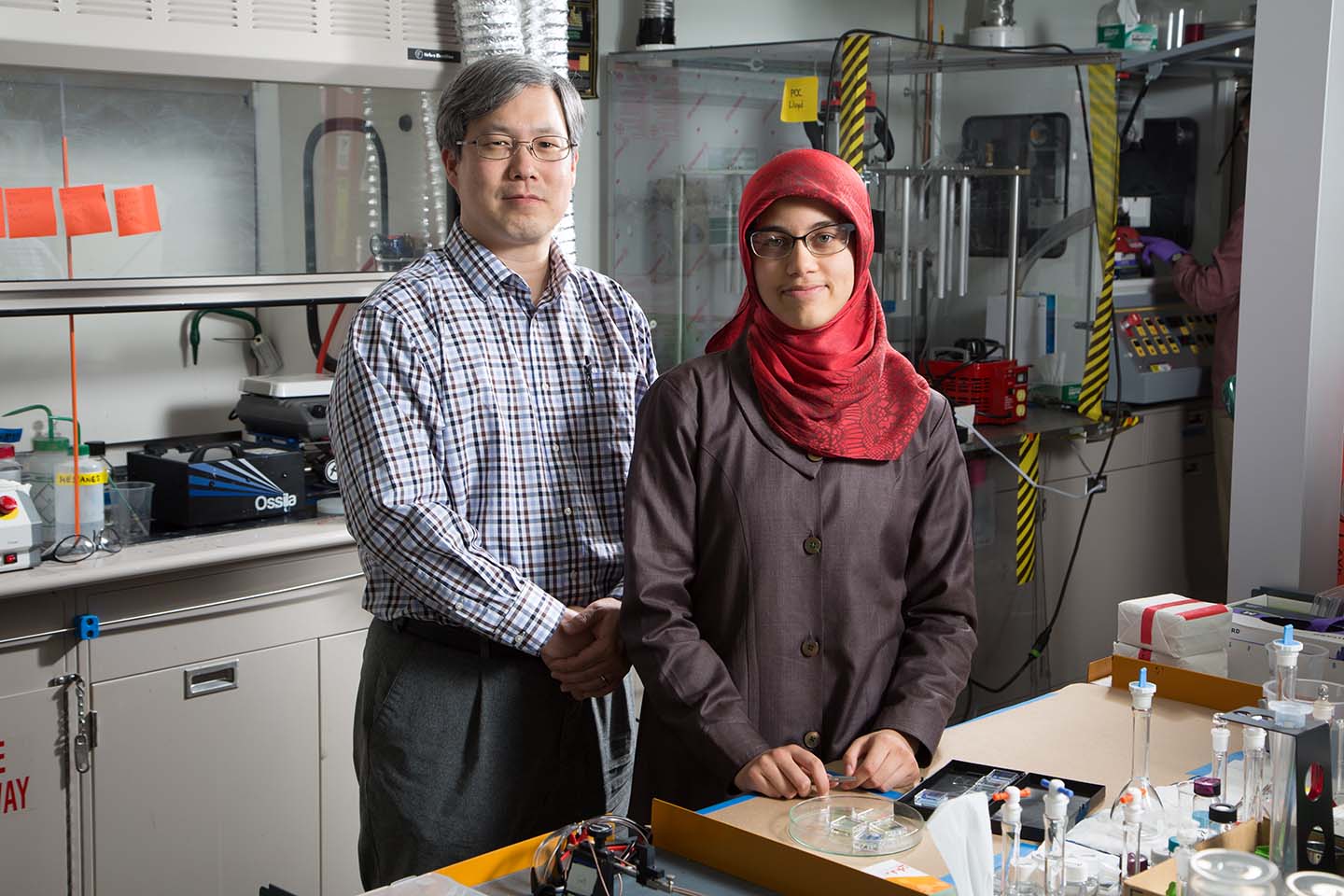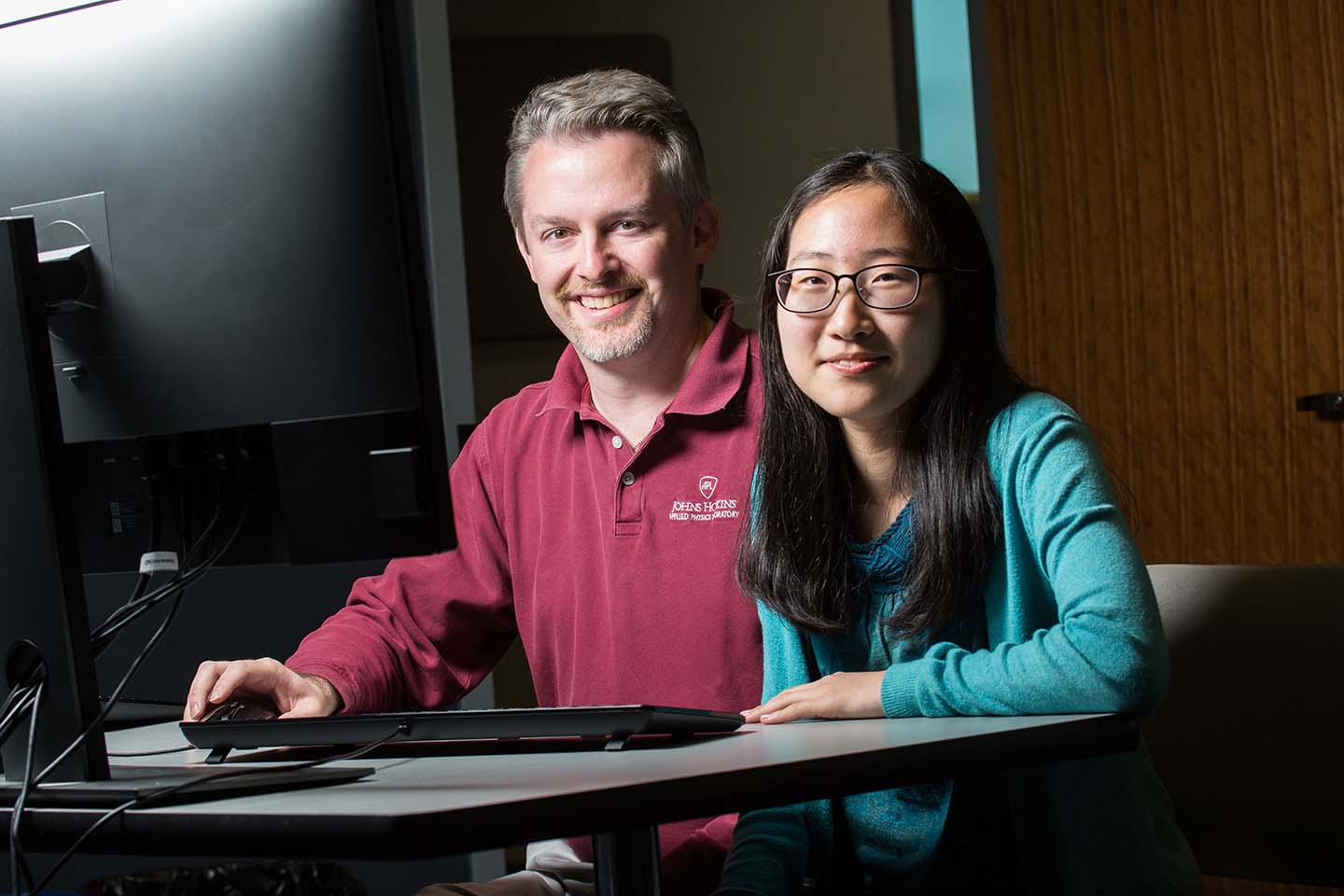Press Release
ASPIRE Students Win Big at Intel Regional Science Fair
Wed, 06/07/2017 - 11:16
The talents of ASPIRE (APL’s Student Program to Inspire, Relate and Enrich) students were on full display at the Intel Science Fair on March 26 in Baltimore, as interns Suzie Byun and Sabahat Fatima earned awards for innovative ideas that could potentially improve lives and deliver power more efficiently.
Back and Better Than Ever
Now a senior at Al-Rahmah School in Baltimore, Sabahat Fatima is no stranger to winning awards at this fair. She earned honors at last year’s fair for her work on “Sensitization of Solar Cells Using Dyes from Food Waste,” when she studied the feasibility of using dyes from peels from fruits and vegetables in place of hazardous metal complex dyes to capture sunlight in dye-sensitized solar cells.
“This was my fourth and final year at the science fair,” she said. “I have continuously participated for the opportunity to present my research and get feedback from experts and gain exposure to competition outside of my school.”
Building on last year’s project, Fatima used a peel dye with anthocyanin — water-soluble pigments that appear in red, purple and blue foods (especially in blueberries, raspberries, black rice and black soybeans) — and came up with a transparent solar cell by replacing the opaque graphite catalyst that she used last year with a transparent, conductive polymer. The idea turned into this year’s Grand Prize winner, “Catching the Sun with Transparent Solar Cells: Application of Natural Dye-Sensitized Solar Cells as BIPVs (Building Integrated Photovoltaics).”
“Winning the grand prize came as a pleasant surprise, as there were numerous students with amazing and impactful projects competing for the award,” she said.
She mentioned that the silicon solar cells seen on rooftops can only be applied to limited surfaces, but this technology increases potential renewable energy-generating surfaces, making total reliance on renewable energy more achievable. When the solar cells are installed as windows, they will serve dual purposes of clean power-generating devices and harmful-radiation shields.
Her mentor, Michael Jin, of the Research and Exploratory Development Department, provided her with a lab environment and trained her to use machines and devices specific to solar cell fabrication and analyses. Jin also provided Fatima with constructive feedback that she said was integral to her work. “I am grateful for the time he took out of his schedule to help me plan and pace my work so that I was able to complete my internship assignments and succeed with my project,” she said.
“The only thing I helped Sabahat with was to show her how to spend 90% of her time planning her lab work and other logistics associated with a formal review process and presenting her work externally,” said Jin. “It was also a learning experience for me because it took a while for me to figure out how to scope a rewarding independent project for a high school student. The important thing is that this experience has motivated me to continue work with high school students.”

